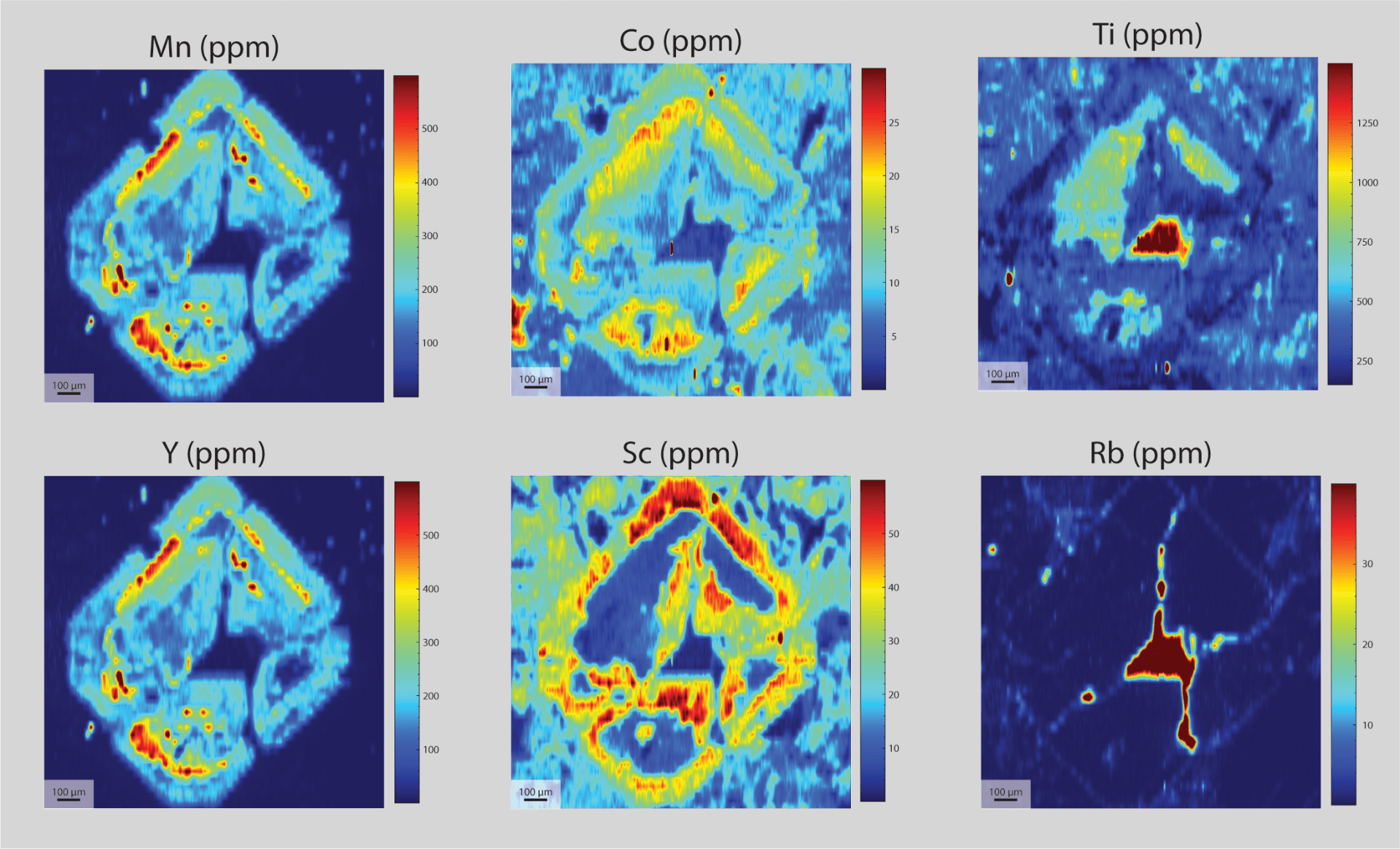The CMaS Facility specializes in the study of trace element chemistry in a range of solid sample materials.
The Agilent 8900 can operate in both single quadrupole (MS) or tandem (MS/MS) mode. In MS/MS operation, both quadrupoles in the Agilent 8900 act as mass filters. The first quadrupole (Q1) selects ions at the target analyte mass, allowing passage of the targeted ions to an interior collision/reaction cell. Mass-shift reactions with gas in the collision/reaction cell separate the targeted analyte ions from overlapping interfering ions. The ions that emerge from the collision/reaction cell are then filtered by the second quadrupole (Q2) before introduction to the detector. This configuration improves the resolution of spectroscopic interferences including polyatomic ion overlaps and isobaric and doubly-charged interferences. As a result, the Agilent 8900 can determine a wider range of analytes extending to much lower concentrations with greater reliability and higher confidence compared to traditional single quadrupole ICP-MS. More information about the Agilent 8900 and its applications can be found here.
Common LA-ICP-MS-MS analyses include:
Trace Element Analysis
Trace element analyses of glasses, silicate and oxide materials are the most routine analyses in the CMaS lab, although analysis of many other sample types is possible. Please contact lab manager Lyndsey Fisher to learn more.
Trace Element Mapping
Maps may be run to quantitatively measure and image the internal distribution of trace elements in solid matrices. Below is a map showing the distribution of the trace elements Mn, Co, Ti, Y, Sc and Rb in the mineral garnet contained in an eclogite from the island of Syros in Greece. The scale to the right of each map shows the concentration of each element in ppm. This garnet is strongly zoned in Mn, Co, Ti, Y and Sc. The high concentration of Rb in the center of the garnet is due to the presence of the mineral phengite in the garnet interior.
U/Pb Isotopes
U/Pb isotope ratios are often used by geologists to date samples. The Agilent 8900 may be operated in MS/MS mode to remove the isobaric 204Hg interference on 204Pb during sample analysis, offering improved resolution and ultimately better constrained U-Pb ages compared to traditional single quadrupole techniques. The CMaS facility is in the process of acquiring a variety of zircon and titanite standards to refine our U-Pb isotope analytical technique.
Rb/Sr Isotopes
Obtaining 87Sr/86Sr ratios using single quadrupole ICP-MS is challenging due to the isobaric overlap of 87Rb and 87Sr. However, 87Sr and 87Rb may be separated from each other using the triple quadrupole and reaction in the collision/reaction cell of the Agilent 8900. A technique to analyze Rb/Sr isotopes is under development in the CMaS facility.
Any other projects that can be completed with LA-ICP-MS can be discussed with the operators to determine feasibility and development time for new methods. Projects that have been completed using the CMaS Facility can be found here.
This facility will only accept solid sample material for LA-ICP-MS analysis. No liquid samples are run on these machines. Samples should ideally have a flat, polished surface for ablation. We have sample holders that can hold standard thin sections, 1 inch rounds, and 0.5 inch rounds. Other sample types may be able to be accommodated in the sample chamber.
Precision and accuracy data for the LA-ICP-MS can be found here.




